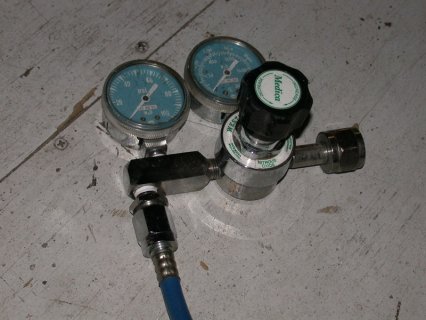
Nitrous oxide Systems for sale
By E. Daniel Shoemaker, national product trainer, Accutron Inc.
Outfitting a dental group practice with nitrous oxide calls for strategy and knowhow. First and foremost, safety must be taken into consideration. Patient and staff safety are of the greatest concern when medical gasses are being plumbed into a facility. The National Fire Protection Agency (NFPA) requires that the plumbers and installers of the actual piping system be certified as medical gas installers, and that each system be verified for safety by a third-party verifier who has no financial involvement in the sale or installation of any of the devices on the system. The verifier is the best friend to the dentist and others who may use the medical gas system, as he or she tests every function of the equipment and takes readings on the gasses coming out of every medical gas outlet. Every office should have a certificate of verification from a third-party verifier. This is of the highest safety priority and eliminates any chance of a crossed line, improper piping risers or other errors by the installers.
As group practices become larger, building planners are using the space provided to create multiple levels or multiple hallways of dental procedure areas. A few factors must be taken into consideration when planning these offices of the future.
To begin with, the location of the medical gas storage room in relation to the dental procedure areas has a bearing on what devices are required. Automatic switchover manifolds are required in several scenarios. Even when they are not required, however, they are a tremendous advantage for the dental staff, as they have indicators to alert and warn the staff of the simplest need, such as reminding them to order a replacement cylinder when one is depleted of gas. Zones of dental procedure areas are established when separations are created by distance, levels (i.e., floors) and access doors. The NFPA 99 standard stipulates the safety devices that are required for all nitrous oxide/oxygen systems, particularly when complications of multiple zones of procedure areas are created.
The NFPA Category 3 permits up to two alarm panels and up to four multiple zone valves to share a single manifold system. This allows the facility to share a single manifold system between two alarm panel locations (e.g., floor 1 and floor 2, or hall A and hall B), as well as allows for multiple zone valve locations. These zone valve requirements may vary by local codes.
You might also like








